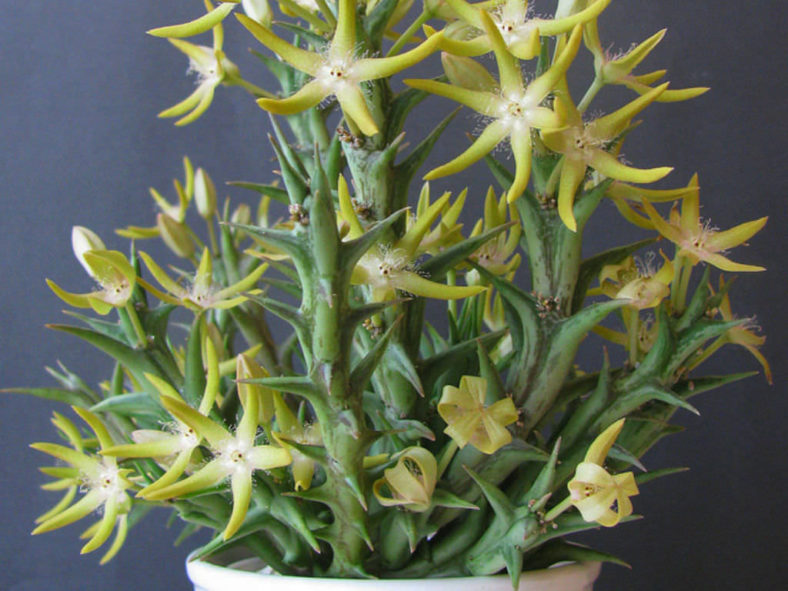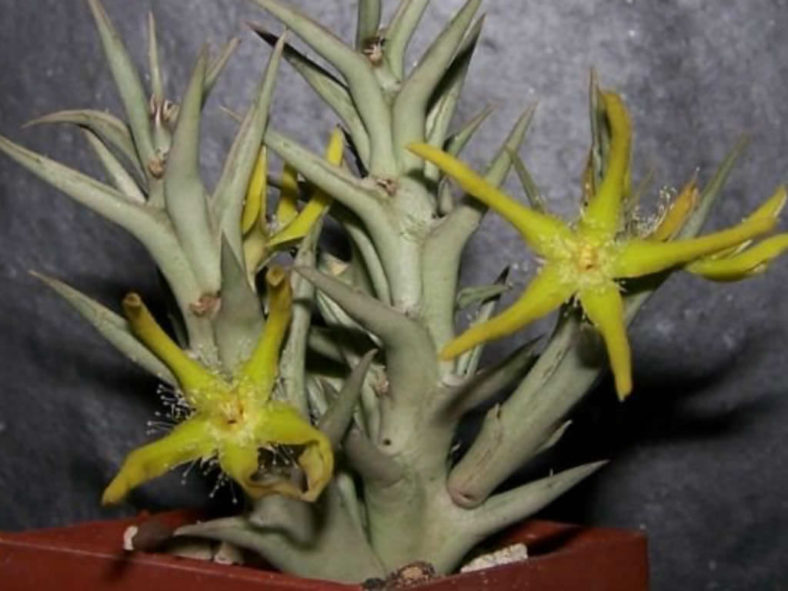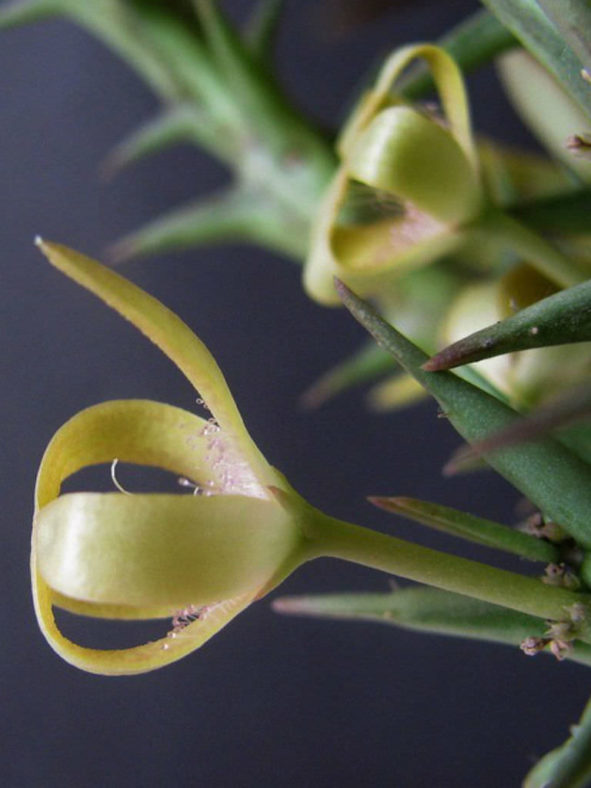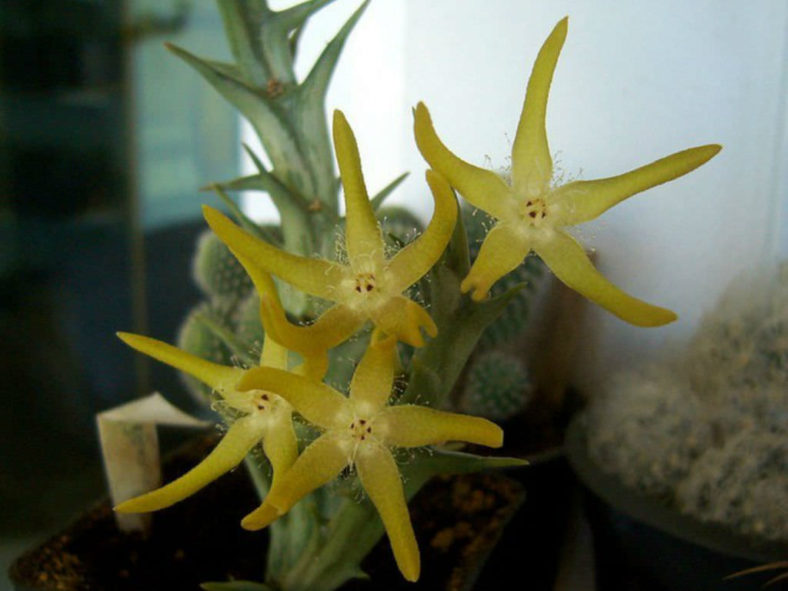Scientific Name
Orbea lutea (N. E. Br.) Bruyns
Synonym(s)
Angolluma rogersii, Caralluma rogersii, Ceropegia rogersii, Pachycymbium rogersii, Stapelia rogersii
Scientific Classification
Family: Apocynaceae
Subfamily: Asclepiadoideae
Tribe: Ceropegieae
Subtribe: Stapeliinae
Genus: Orbea
Etymology
The specific epithet "rogersii" (pronounced "ro-JERZ-ee-eye") honors Frederick Arundel Rogers (1876-1944), a British-born South African missionary and botanist, who collected plants in South Africa, the Belgian Congo (today the Democratic Republic of the Congo), and Rhodesia (an unrecognised country in Southern Africa that existed from 1965 to 1979).
Origin
Orbea rogersii is native to Botswana, southern Zimbabwe, South Africa (Limpopo, Mpumalanga, and KwaZulu-Natal), and Eswatini. It grows in sandy soil in bushveld scrub.
Description
Orbea rogersii is a small succulent that forms clumps of slender, erect or ascending stems with conical tubercles arranged loosely into four rows. It can grow up to 4 inches (10 cm) tall and spread 20 inches (50 cm) in diameter. The stems are pale green to grey-green and flecked with red-brown. The tubercles can measure up to 0.8 inches (2 cm) in length.
The flowers are very deeply and narrowly lobed, usually not expanding fully. They can reach a diameter of 1.4 inches (3.5 cm). The corolla is smooth and pale green on the outside, with a few darker veins, and pale greenish-yellow to white on the inside. The corona is cream-colored, with inner lobes subdivided into long filiform segments coiled at tips. It can measure up to 0.4 inches (1 cm) in height and 0.2 inches (0.5 cm) in diameter.

How to Grow and Care for Orbea rogersii
Hardiness: USDA hardiness zones 10a to 11b: from 30°F (-1.1°C) to 50°F (10°C).
Several species are fairly easy to grow. Others, often those with slightly hairy stems and the more unusual flowers, are more challenging and require careful watering (with some fertilizer) during the growing season and complete water withdrawal during the winter months. A minimum winter temperature of 50°F (10°C) is acceptable, provided plants are kept dry. A heated growing bench or incubator can help delicate plants survive the colder months. However, many species live under shrubs in their habitat and prefer light shade rather than full sun.
A gritty compost is essential, and clay pots are advisable for the more delicate species. Some growers prefer mineral-only compost to minimize the chance of a fungal attack on the roots. A layer of grit on the compost surface prevents moisture from accumulating around the base of the stems.
The real key to success is keeping Stapelias and their roots free of pests, such as mealybugs. Fungal attacks often occur when insects damage the stems.
Learn more at How to Grow and Care for Stapelia.
Links
- Back to genus Orbea
- Succupedia: Browse succulents by Scientific Name, Common Name, Genus, Family, USDA Hardiness Zone, Origin, or cacti by Genus
Photo Gallery
Click on a photo to see a larger version.


